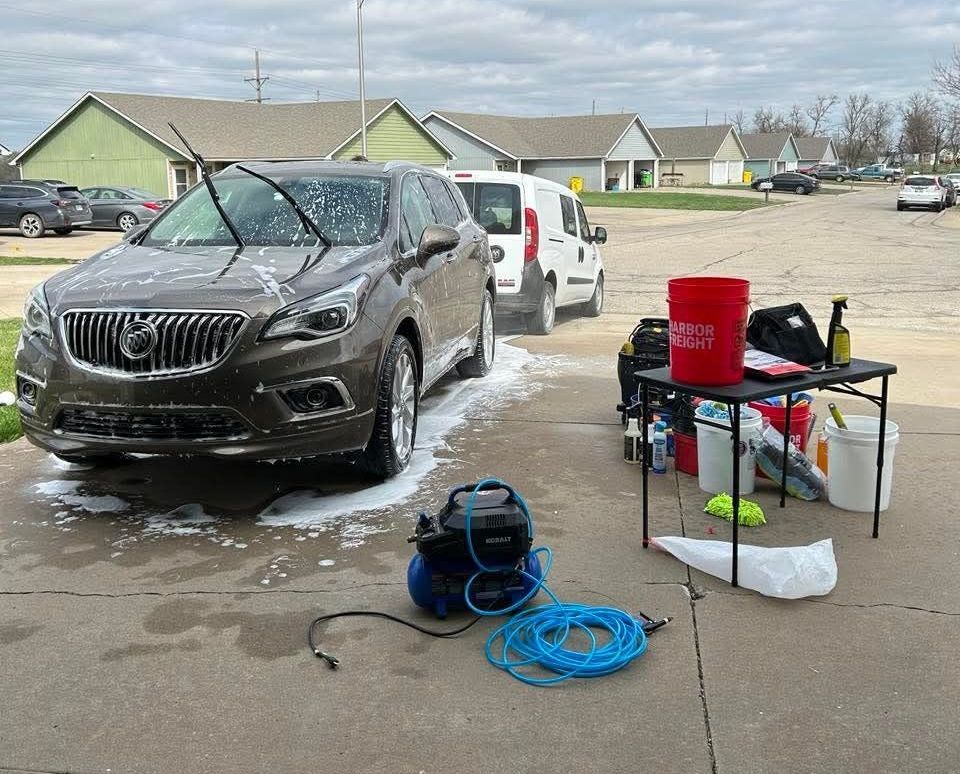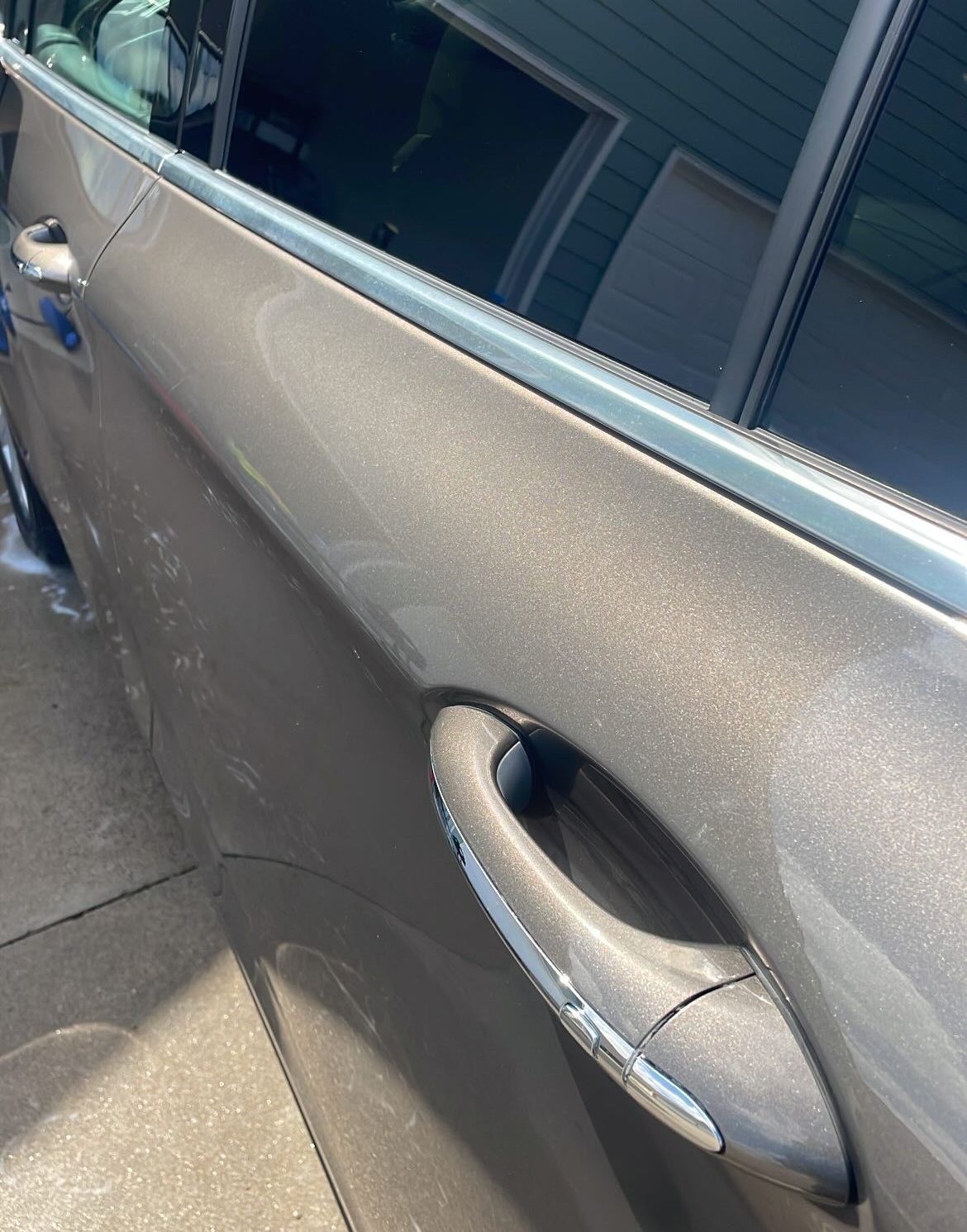How To Clean Fabric Interior Of Car: Professional Tips From Kansas Auto Detailing Experts
A clean car interior transforms your daily driving experience, making every journey more enjoyable and comfortable. If you’ve been wondering how to clean car interior fabric, the experts at Smooth Auto Detailing in Olathe have helped thousands of local drivers restore their fabric car interiors to pristine condition. To effectively clean your car's fabric interior, start with thorough vacuuming, followed by spot-treating stains with an enzyme-based cleaner, and finish with a gentle fabric cleaner applied with a soft brush in overlapping strokes.
Regular maintenance of your car's fabric interior prevents permanent staining and extends the life of your upholstery. Dirt, dust, and debris can work their way deep into fabric fibers, causing wear and discoloration over time. Professional Overland Park car detailing techniques and products can remove embedded dirt while protecting your interior surfaces from future damage, keeping your vehicle looking clean and refreshed year-round.
Your car's interior deserves the same attention as its exterior, especially in Kansas where seasonal changes bring unique cleaning challenges. From summer dust to winter salt, these elements can take a toll on your fabric seats and carpets. A proper cleaning routine protects your investment and maintains your vehicle's resale value.
Key Takeaways
- Vacuum thoroughly before applying any cleaning products to prevent dirt from spreading
- Use specialized fabric cleaners and proper techniques to avoid water spots and damage
- Regular maintenance prevents permanent staining and prolongs interior life
Essential Tools and Products for Cleaning Fabric Car Interiors
The right combination of cleaning supplies makes the difference between a mediocre and professional-quality interior clean. Quality tools and products protect your fabric surfaces while removing deep-set dirt and stains effectively.
Choosing Effective Upholstery Cleaners
Select enzyme-based upholstery cleaners specifically formulated for automotive fabric. These cleaners break down organic stains and remove embedded dirt without damaging the fibers.
Top features to look for:
- pH-balanced formula
- No harsh chemicals
- Quick-drying properties
- Stain-lifting capabilities
Apply the cleaner with a soft-bristled brush to work it into the fabric without causing damage. Test the product on a small, hidden area first to ensure colorfastness.
The Importance of Microfiber Cloths and Towels
Microfiber tools are essential for safe, effective fabric cleaning. Use separate towels for different cleaning stages to prevent cross-contamination.
Recommended microfiber specifications:
- 300-400 GSM for general cleaning
- 500+ GSM for drying and buffing
- Split microfiber design for better absorption
Keep light-colored towels for cleaning and dark ones for drying. Replace microfiber tools when they become worn or lose their effectiveness.
Using All-Purpose and Glass Cleaners the Right Way
Multi-surface cleaners tackle plastic trim and hard surfaces around fabric areas. Glass cleaners remove haze and fingerprints from windows without dripping onto upholstery.
Application tips:
- Spray cleaners onto towels, not directly on surfaces
- Use minimal product to prevent oversaturation
- Clean from top to bottom to control drips
Choose ammonia-free glass cleaners to protect tinted windows and surrounding fabric surfaces.

Step-by-Step Process to Clean Fabric Car Interiors
A thorough fabric cleaning process requires proper tools, techniques, and attention to detail. The right approach prevents damage while ensuring deep cleaning of all fabric surfaces.
Preparation and Decluttering Before Cleaning
Remove all items from your car, including floor mats, toys, papers, and personal belongings. This step gives you full access to every surface.
Gather your cleaning supplies:
- Vacuum with attachments
- Fabric cleaner
- Microfiber towels
- Soft-bristled brush
- Clean spray bottle
- Clean water
Check the weather forecast - choose a warm, dry day for better drying conditions. Open all doors and windows to maximize ventilation during the cleaning process.
Vacuuming Seats and Carpets With Proper Attachments
Start with a thorough vacuum using the crevice tool for tight spaces between seats and along edges. This removes loose dirt and debris.
Use brush attachments for fabric seats and carpets, working in overlapping lines to ensure complete coverage. Pay special attention to high-traffic areas like driver's seat and floor mats.
Work from top to bottom - start with seats, then move to carpets. This prevents dirt from falling onto already cleaned areas.
Targeted Stain Removal and Spot Treatment
Test fabric cleaner on a small, hidden area first to ensure colorfastness. Wait 5 minutes to check for any adverse reactions.
Apply fabric cleaner to stains using gentle circular motions with a soft brush. Don't oversaturate the fabric - less is more.
Common stains need different approaches:
- Coffee/soda: Blot with clean water first
- Mud: Let dry completely, then vacuum before treating
- Oil: Use specialized degreaser products
- Ink: Rubbing alcohol on a microfiber towel
Drying Techniques for Fabric Upholstery
Press clean microfiber towels firmly against cleaned areas to absorb excess moisture. Replace towels as they become damp.
Park in direct sunlight with windows down if possible. Set up fans to circulate air through the vehicle.
Place silica gel packets or moisture absorbers in the car overnight to prevent musty odors from developing.
Leave doors open for 2-3 hours minimum after cleaning. Consider using a dehumidifier in humid conditions.
Detailing and Refreshing the Interior for a Pro Finish
A pristine car interior requires meticulous attention to detail and proper technique. Professional-grade results come from systematically addressing every surface while using the right tools and products.
Tackling Hard-to-Reach Areas and Crevices
Start with compressed air to blast debris from tight spaces between seats and console areas. A detailing brush with soft bristles helps loosen stuck particles in air vents and dashboard crevices.
Use a narrow vacuum attachment to remove dislodged dirt. Pay special attention to seat rails and floor mat edges where debris accumulates.
Cotton swabs dipped in interior cleaner work perfectly for detailed cleaning around buttons and switches. A small detailing brush can clean intricate textures in speaker grilles and door handles.
Final Touches: Air Fresheners and Odor Elimination
Remove odors at the source rather than masking them. An enzyme-based cleaner breaks down organic matter causing unwanted smells.
Place activated charcoal pouches under seats to naturally absorb lingering odors. These work better than hanging air fresheners and won't overwhelm the cabin.
Choose subtle scents like vanilla or leather if using air fresheners. Spray fabric refresher directly on seats and carpets, allowing them to dry completely.
Maintaining Cleanliness Between Deep Cleans
Keep microfiber towels and interior wipes in your car for quick spot cleaning. Address spills immediately before they can set into fabrics.
Shake out floor mats weekly and vacuum seats monthly. This prevents dirt from grinding into fibers.
Install seat covers to protect fabric from daily wear. Use clear vinyl mats during wet weather to keep moisture off carpets.
Place small trash bags in convenient spots to avoid accumulation of debris. Empty them regularly to prevent odors from developing.
Special Considerations for Leather and Mixed Interiors
Modern vehicles often combine leather with fabric or vinyl materials, requiring specific care approaches to maintain each surface properly while protecting adjacent materials.
Proper Use of Leather Cleaners
Select pH-neutral leather cleaners specifically designed for automotive use. These products remove dirt and oils without damaging the leather's protective coating.
Apply the cleaner to a microfiber cloth rather than directly on the leather surface. This prevents oversaturation and potential staining of nearby fabric surfaces.
Test the cleaner on a small, hidden area first to ensure compatibility with your specific leather type.
Use gentle circular motions when cleaning, and avoid excessive scrubbing that could damage the leather's surface.
Nourishing With Leather Conditioner
Apply leather conditioner every 3-4 months to prevent cracking and maintain the material's natural oils.
Work in small sections, using a clean microfiber applicator pad to distribute the conditioner evenly.
Key application areas:
- Seat bolsters
- Steering wheel
- Armrests
- Door panels
Allow the conditioner to penetrate for 20-30 minutes before buffing with a clean microfiber cloth.
Avoid applying conditioner to perforated leather sections, as this can clog the ventilation holes.



Want to advertise your local business on our blog content?
Reach out to learn about partnering with us!
